Kokanee salmon recovery partners release record-high number of young fish into Lake Sammamish while new research shows a potentially faster path toward stabilization
Summary
Oct. 18, 2024: As a recovery team coordinated by King County released a record-high number of young salmon into Lake Sammamish, new research shows that the population would recover much sooner if lake conditions improve.
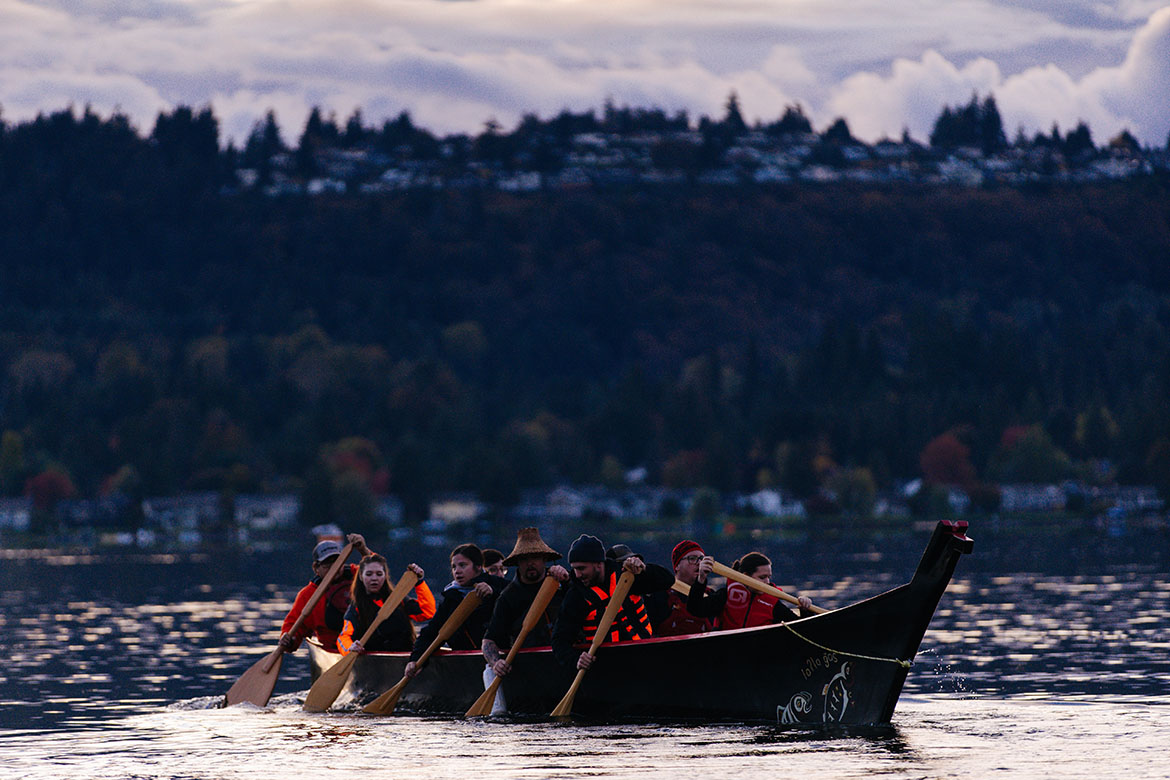
News
A partnership coordinated by King County hosted a release Thursday evening for a record number of young kokanee salmon in the middle of Lake Sammamish, the latest milestone for an ongoing joint effort to help ensure the survival of a native species important to the region’s habitat and history.
King County Deputy Executive Shannon Braddock was joined by Snoqualmie Indian Tribe Chair Robert de los Angeles and other partners to release the first of 12,000 young salmon into the lake watershed. Scientists believe the record-high number of fry is the result of keeping young salmon in a controlled setting for an extended period, releasing them during the fall when the fish are larger, lake water temperatures are cooler, and oxygen levels are higher.
Partners hosted the lakeside event six years after King County Executive Dow Constantine directed the Department of Natural Resources and Parks to enact recommendations by the Lake Sammamish Kokanee Work Group following a sudden, alarming decline in the number of spawning adults.
"Years of hard work and ingenuity by our employees and partners contributed to a record number of young kokanee salmon being released to their ancestral waters,” said Executive Constantine. “Achieving the shared goal of a fully recovered kokanee population will require ongoing, united effort, but our success to date demonstrates the power of collective action to bring this iconic ‘little red fish’ back from the brink of extinction.”
While new research shows that current actions taken by partners will likely contribute to a healthy population over the next 25 years, experts believe the population would recover much sooner if lake conditions improve, too.
Members of the work group are developing a report – due in 2025 – that will assess the overall kokanee population and environmental threats, studying salmon survival at different life stages, including when they are in the lake. They also are evaluating potential new strategies.
In addition to being culturally and historically significant, the freshwater species is important to the watershed’s biodiversity with a unique genetic signature that has been shaped by the lake’s diverse characteristics.
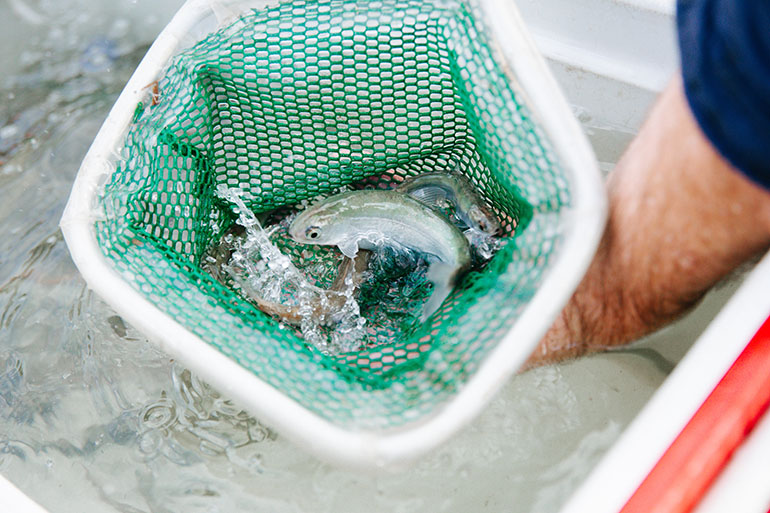
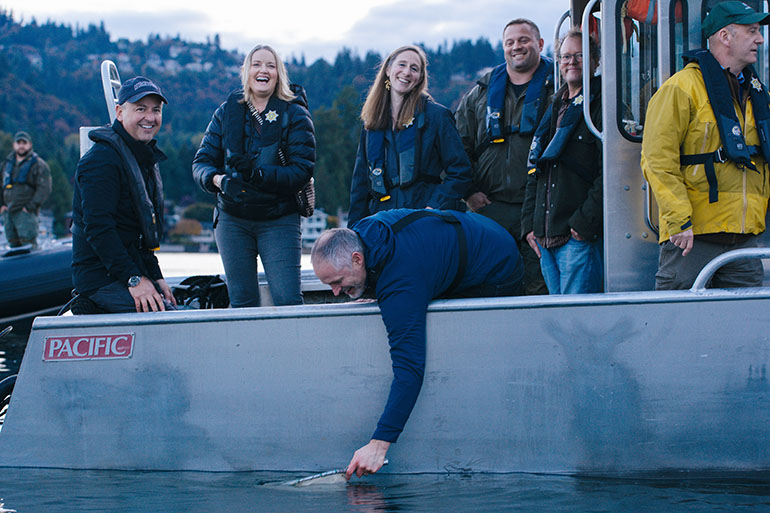
Continuing successful recovery actions and recommending new strategies
The Lake Sammamish Work Group has continued actions that have proven to be successful and recommended new actions that could expediate the salmon population’s recovery.
The latest results show that young kokanee released in the fall – after they have had more time to grow bigger and faster, and lake conditions have improved – are twice as likely to make it to adulthood than kokanee entering the lake from streams during spring. The partners have also continued operating an off-site program where native kokanee are grown and spawn in a safer environment, and their offspring are brought to the Lake Sammamish watershed.
The work group recommends using more remote stream incubators – small metal boxes containing gravel and fertilized kokanee eggs that are placed alongside a stream with water flowing through the eggs and gravel – in lake tributaries. After the incubating eggs have hatched, the young kokanee can swim directly into the stream and eventually into Lake Sammamish where they will spend three or four years feeding and growing before returning to their home stream to spawn.
The kokanee recovery efforts are complemented by ongoing work throughout the watershed, which includes removing barriers to upstream habitat and restoring spawning and rearing habitat in tributaries in the Lake Sammamish watershed. That effort includes planting native vegetation along streams to lower water temperatures and make it easier for young salmon to hide from predators.
The Lake Sammamish Kokanee Work Group includes residents who live in the surrounding watershed, recreational fishers, the Snoqualmie Indian Tribe, the cities of Bellevue, Issaquah, Sammamish, and Redmond, the U.S. Fish and Wildlife Service, the Washington Department of Fish and Wildlife, Washington State Parks, Trout Unlimited, Mid-Sound Fisheries Enhancement Group, Mountains to Sound Greenway Trust, Washington Sensible Shorelines Association, Friends of Issaquah Salmon Hatchery, Save Lake Sammamish, Friends of Pine Lake, Friends of Sammamish State Park, and Long Live the Kings.
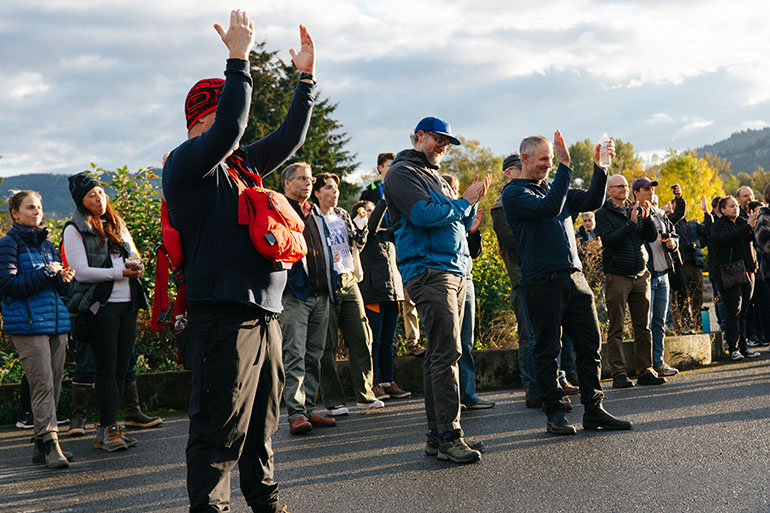
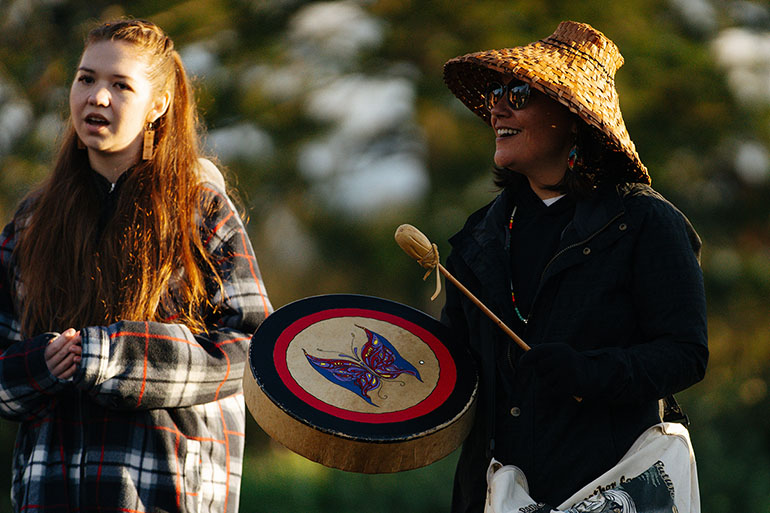
The work group is coordinated by King County’s Water and Land Resources Division, one of four divisions at the Department of Natural Resources and Parks.
“There are no final victories for salmon recovery, but there are achievements that deserve recognition,” said John Taylor, Director of the Department of Natural Resources and Parks. “I am grateful for our talented employees who have aligned the efforts of a strong partnership to help ensure the survival of native kokanee.”
Multimedia
- PHOTO GALLERY: 2024 kokanee salmon release
- TRACKS: An interactive map of environmental stewardship in King County
Resources
Quotes
Years of hard work and ingenuity by our employees and partners contributed to a record number of young kokanee salmon being released to their ancestral waters. Achieving the shared goal of a fully recovered kokanee population will require ongoing, united effort, but our success to date demonstrates the power of collective action to bring this iconic "little red fish" back from the brink of extinction.
There are no final victories for salmon recovery, but there are achievements that deserve recognition. I am grateful for our talented employees who have aligned the efforts of a strong partnership to help ensure the survival of native kokanee.
It’s wonderful to see the record number of young salmon released into Lake Sammamish, and I’m grateful to the Snoqualmie Indian Tribe, King County’s Department of Natural Resources and Parks, and the Lake Sammamish Kokanee Work Group for their ongoing work in ensuring that our kokanee salmon population thrives after decades of decline. Native kokanee salmon have played a significant role in the lives of Snoqualmie Tribal members since time immemorial, and it will take innovative strategies and thoughtful partnerships like this to make sure that our kokanee salmon are protected for generations to come.
The work to restore our native Kokanee population is, at its core, about honoring this place that we call home. We owe it to the First Peoples of this region, and to future generations, to undo as much of the damage done during the last 150 years to these waterways as possible. I am hopeful that the work in Lake Sammamish and its associated streams and creeks, and the lessons learned here, will show the path forward for doing equivalent work for the threatened native Kokanee in Lake Washington and its tributary waterways.
It is truly an honor to participate in the kokanee fry release ceremony, to be out on the water and reflect on the cultural and environmental significance of restoring the "little red fish" to their rightful home. It reminds us that, while human activity helped contribute to the decline of this species, we also have the power to act differently and help our ecosystem recover and heal.
The recovery of the iconic Lake Sammamish Kokanee Salmon, one of the last remaining native kokanee populations in the Pacific Northwest, is vital to preserving both culture and the quality of life we cherish. Bringing this little red fish back from the brink of extinction has been a collaborative effort, and continued commitment from the Kokanee Work Group and additional community support will be essential to achieving a self-sustaining kokanee population. Trout Unlimited and our volunteers are proud to have supported this effort for nearly two decades and remain committed to seeing Lake Sammamish Kokanee thrive and turn the rivers red once again.
Contact
Saffa Bardaro, Water and Land Resources Division, 206-477-4610

 Translate
Translate